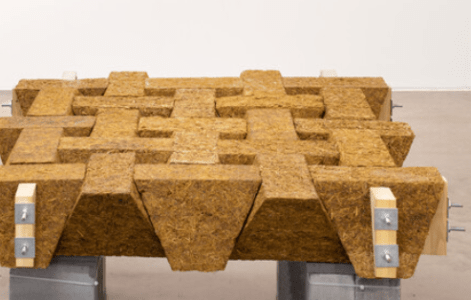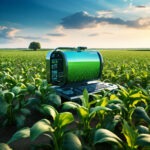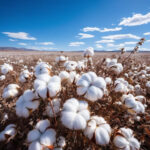Sugarcrete, a groundbreaking construction material developed by scientists at the University of East London (UEL), represents a significant milestone in sustainable construction practices. In collaboration with Tate & Lyle Sugars and with creative input from Grimshaw, Sugarcrete offers a compelling alternative to traditional bricks and concrete, addressing the pressing need for low-carbon building materials.
Development of Sugarcrete
Sugarcrete is derived from sugarcane fibers, specifically bagasse, which is the residual fiber left over after sugar sap extraction. By combining bagasse with bespoke sand-mineral binders, researchers have created a versatile material that serves both as an insulating panel and a load-bearing element, showcasing its adaptability in construction.
Environmental Benefits
One of the standout features of Sugarcrete is its significantly reduced carbon footprint compared to conventional materials. Studies by UEL’s Sustainability Research Institute (SRI) indicate that Sugarcrete production results in a carbon footprint that is only 15-20% of that associated with concrete production. Additionally, Sugarcrete offers faster curing times, requiring only one week compared to the 28 days typically needed for concrete, and is four to five times lighter than concrete blocks.
Technical Advantages
Sugarcrete’s technical advantages extend beyond its environmental benefits. Through advanced digital modeling and robotic fabrication techniques, researchers have developed prototypes for Sugarcrete slabs, demonstrating its viability as a demountable, reusable, and fire-resistant composite material for flooring systems.
Global Impact
The potential impact of Sugarcrete on global carbon emissions is profound. With sugarcane being the world’s largest crop by production volume, the use of bagasse-based products like Sugarcrete presents an opportunity to significantly reduce CO2 emissions in the construction sector, which accounts for 40% of annual global CO2 emissions.

Img Src:-krishijagaran.com
Application in India
Recent developments in India highlight the local applicability and scalability of Sugarcrete. Senior Lecturer Armor Gutierrez Rivas’s visit to India showcased the material’s potential to reduce carbon emissions in the country’s building sector. Partnerships with organizations like Chemical System Technologies (CST) demonstrate the feasibility of integrating Sugarcrete into India’s construction landscape.
Socio-economic Implications
Sugarcrete has broader socio-economic implications, particularly in empowering women and rural communities involved in sugarcane cultivation and brick production. By providing a decarbonized alternative and a sustainable income stream, Sugarcrete has the potential to transform livelihoods and promote sustainable development.
Conclusion
Sugarcrete stands at the forefront of sustainable construction materials, offering a blend of environmental friendliness, technical versatility, and global scalability. Its development marks a significant step towards a greener, more resilient built environment.
Click Here For MOre Innovatives In Agriculture
FAQs
Q: What is Sugarcrete made of?
A: Sugarcrete is primarily made from bagasse, the residual fiber left over after sugar sap extraction, combined with bespoke sand-mineral binders.
Q: How does Sugarcrete reduce carbon emissions?
A: Sugarcrete production results in a significantly reduced carbon footprint compared to traditional materials, with studies showing it to be only 15-20% of that associated with concrete production.
Q: Is Sugarcrete cost-effective compared to traditional materials?
A: While initial costs may vary, Sugarcrete’s long-term benefits, such as reduced maintenance and energy costs, make it a cost-effective choice in the long run.
Q: Can Sugarcrete be used in earthquake-prone areas?
A: Sugarcrete’s structural integrity and fire-resistant properties make it suitable for use in earthquake-prone areas, offering a sustainable alternative to traditional materials.
Q: What are the future plans for implementing Sugarcrete globally?
A: UEL is actively exploring partnerships and opportunities for implementing Sugarcrete on a global scale, with a focus on its environmental and socio-economic benefits.










